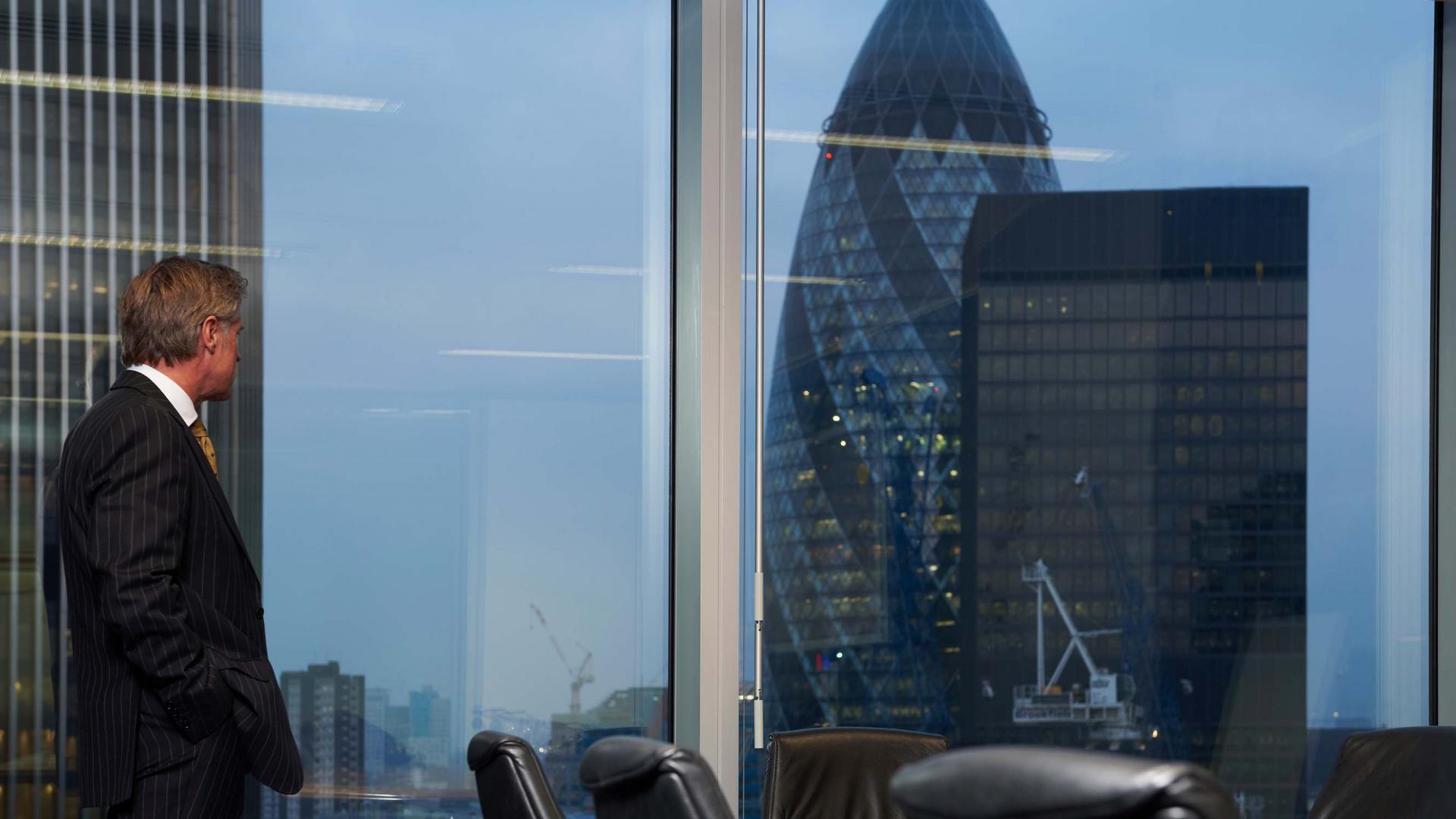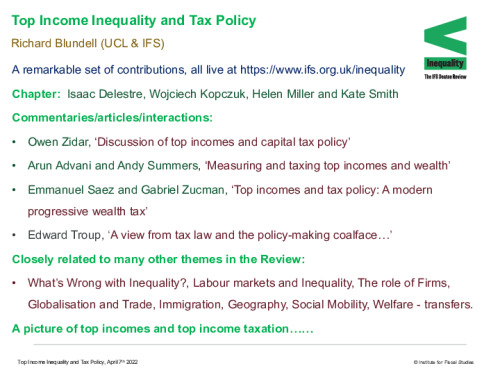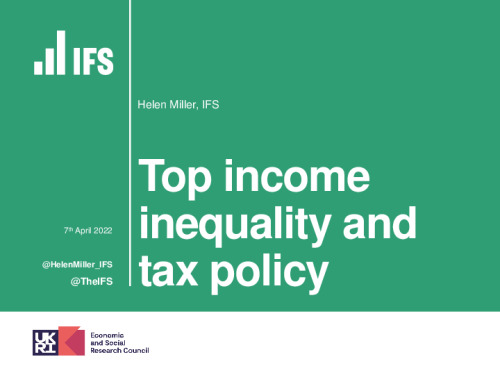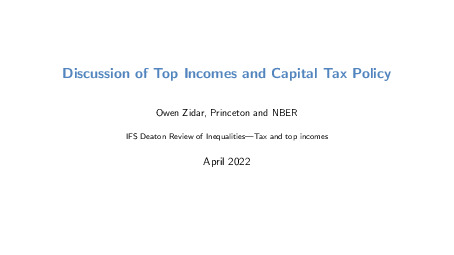
The source of top incomes, who gets them and how they are taxed is important for understanding inequalities. How have top incomes and their source been changing over time? Who is in the top 1% - are they employees, or business owners or rentiers? How much tax do the top pay and should they pay more?
Downloads

Richard Blundell's Presentation
PDF | 230.41 KB

Helen Miller's Presentation
PDF | 340.7 KB

Owen Zidar's Presentation
PDF | 387.05 KB
The top 1% of UK adults receive around 15% of pre-tax income. The source of top incomes, who gets them and how they are taxed is important for understanding inequalities.
At this online event we addressed a number of key questions. How have top incomes and their source been changing over time? Who is in the top 1% - are they employees, or business owners or rentiers? How much tax do the top pay and should they pay more? How have things differed in the US, and can this help determine the cause of top income shares? How do tax authorities approach some of the difficulties with taxing top incomes, including the large degree of uncertainty about how those with high incomes will respond to tax increases? How does income inequality relate to others forms of inequality?
This event was chaired by Paul Johnson, IFS Director, and featured talks from:
- Richard Blundell, IFS & UCL
- Helen Miller, IFS Deputy Director
- Edward Troup, former senior civil servant in HMRC and HM Treasury
- Owen Zidar, Professor of Economics, Princeton
Authors

CPP Co-Director
Richard is Co-Director of the Centre for the Microeconomic Analysis of Public Policy (CPP) and Senior Research Fellow at IFS.


Edward Troup

Owen Zidar
Presentation details
- Publisher
- Institute for Fiscal Studies
Suggested citation
Blundell, R et al. (2022). 'Tax and top incomes' [Presentation]. London: Institute for Fiscal Studies. Available at: https://ifs.org.uk/publications/tax-and-top-incomes (accessed: 24 April 2024).
More from IFS
Understand this issue

Spring Budget 2024: What you need to know
7 March 2024

Sure Start achieved its aims, then we threw it away
15 April 2024

Spring Budget 2024: the Chancellor’s options
Policy analysis

Oil and gas make Scotland’s underlying public finances particularly volatile and uncertain
27 March 2024

Recent trends in public sector pay
26 March 2024

Gap between higher- and lower-paid public sector workers falls by more than a third since 2007 as doctors and experienced teachers have faced unprecedented pay cuts
26 March 2024
Academic research

Police infrastructure, police performance, and crime: Evidence from austerity cuts
24 April 2024

Labour market inequality and the changing life cycle profile of male and female wages
15 April 2024

There and back again: women’s marginal commuting costs
2 April 2024